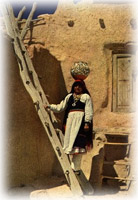
Worksheets and No Prep Teaching Resources
Reading Comprehension Worksheets
 Worksheets and No Prep Teaching Resources Reading Comprehension Worksheets |
|
| edHelper's suggested reading level: | grades 4 to 6 | |
| Flesch-Kincaid grade level: | 5.63 |
| Print History of the West Region (font options, pick words for additional puzzles, and more) |
| Quickly print reading comprehension |
| Print a proofreading activity |
|
History of the West Region
By Trista L. Pollard |

|
 1 Open land and mountains is what the first settlers saw when they came to the West Region. This region was the last area in the United States to be settled. Spanish explorers came to the southern part of the region in the 1500's. It was not until the mid-1800's that European settlers came to the West.
1 Open land and mountains is what the first settlers saw when they came to the West Region. This region was the last area in the United States to be settled. Spanish explorers came to the southern part of the region in the 1500's. It was not until the mid-1800's that European settlers came to the West. |
Create Weekly Reading Books
Prepare for an entire week at once! |
| Leave your feedback on History of the West Region (use this link if you found an error in the story) |